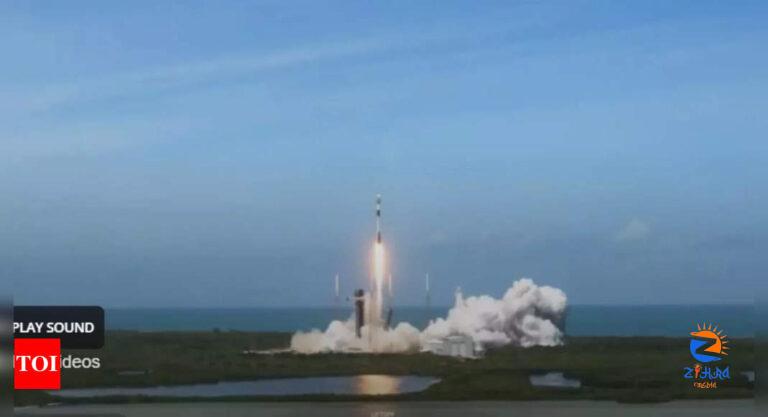
[ad_1]
NEW DELHI: A new study warned that the rapid increase in Starlink satellites launched by Elon Musk‘s SpaceX could significantly deplete Earth’s ozone layer. With 6,000 of the 8,100 objects currently in low Earth orbit belonging to Starlink, the environmental impact of these satellites is raising concerns among scientists.
Joseph Wang, a researcher in astronautics at the University of Southern California and the corresponding author of the study, said, “Only in recent years have people started to think this might become a problem.We were one of the first teams to look at what the implication of these facts might be.”
SpaceX has already received permission to launch an additional 12,000 satellites, with plans for up to 42,000. Other companies, including Amazon, are also planning to launch large constellations of satellites ranging from 3,000 to 13,000.
Published in the AGU journal Geophysical Research Letters, the study examines the environmental impact of satellite reentry into the atmosphere. As satellites burn up, they generate aluminum oxides, which are known to accelerate ozone depletion. The study uses atomic-scale molecular dynamics simulations to investigate this oxidation process.
The findings reveal that the reentry of satellites in 2022 resulted in a 29.5% increase in atmospheric aluminum above natural levels, injecting approximately 17 metric tons of aluminum oxides into the mesosphere. If mega-constellations become a reality, this could rise to over 360 metric tons per year.
Aluminum oxide nanoparticles from these reentries may persist in the atmosphere for decades, eventually catalyzing chlorine activation in the stratosphere, which promotes ozone depletion. The study estimates that for a 250-kg satellite with a 30% aluminum mass fraction, about 32% of the aluminum content is oxidized during reentry, producing around 29.8 kg of aluminum oxide clusters.
In 2022, all reentering satellites together added 41.7 metric tons of aluminum to the atmosphere, which is 29.5% more than the natural levels from space dust.
(With inputs from agencies)
Joseph Wang, a researcher in astronautics at the University of Southern California and the corresponding author of the study, said, “Only in recent years have people started to think this might become a problem.We were one of the first teams to look at what the implication of these facts might be.”
SpaceX has already received permission to launch an additional 12,000 satellites, with plans for up to 42,000. Other companies, including Amazon, are also planning to launch large constellations of satellites ranging from 3,000 to 13,000.
Published in the AGU journal Geophysical Research Letters, the study examines the environmental impact of satellite reentry into the atmosphere. As satellites burn up, they generate aluminum oxides, which are known to accelerate ozone depletion. The study uses atomic-scale molecular dynamics simulations to investigate this oxidation process.
The findings reveal that the reentry of satellites in 2022 resulted in a 29.5% increase in atmospheric aluminum above natural levels, injecting approximately 17 metric tons of aluminum oxides into the mesosphere. If mega-constellations become a reality, this could rise to over 360 metric tons per year.
Aluminum oxide nanoparticles from these reentries may persist in the atmosphere for decades, eventually catalyzing chlorine activation in the stratosphere, which promotes ozone depletion. The study estimates that for a 250-kg satellite with a 30% aluminum mass fraction, about 32% of the aluminum content is oxidized during reentry, producing around 29.8 kg of aluminum oxide clusters.
In 2022, all reentering satellites together added 41.7 metric tons of aluminum to the atmosphere, which is 29.5% more than the natural levels from space dust.
(With inputs from agencies)
[ad_2]
